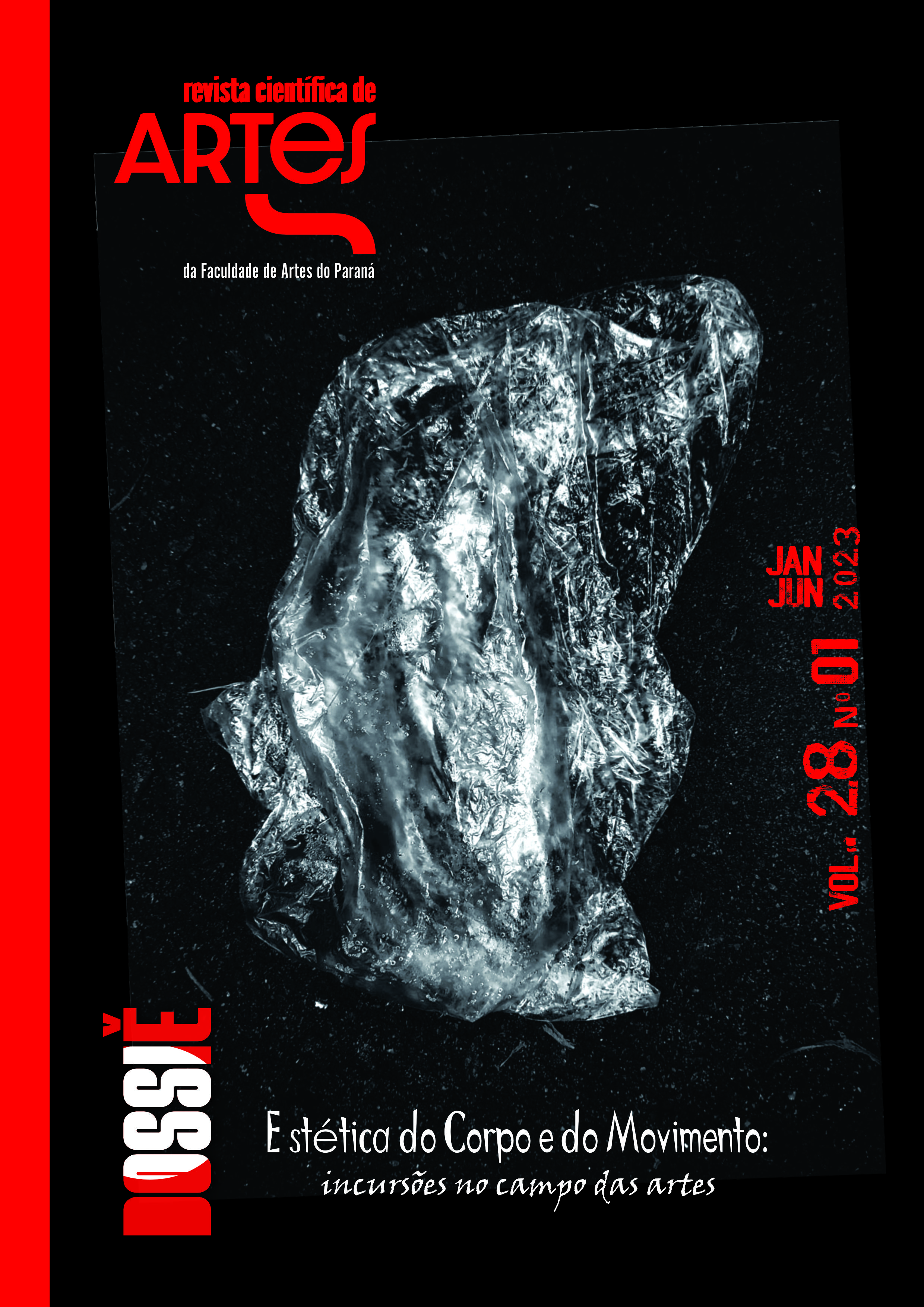Clint Eastwood actor and director
DOI:
https://doi.org/10.33871/19805071.2023.28.1.7576Keywords:
Clint Eastwood, cinema, actor, postclassical, psychological gestureAbstract
This paper aims to reflect on the work of Clint Eastwood as a director and as an actor, using the concepts of classic and post-classical, according to definitions by David Bordwell, Kristin Thompson and Janet Staiger, and the theory of the Psychological Gesture of of the Russian Michael Checkhov. To think of Eastwood as director and actor, the concepts of post-classical and the Psychological Gesture, and of we will study opening sequences from the films Play Misty for Me (1971), his first work as a director and The Outlaw Josey Wales (1976). We base the criterion of analyzing the opening scenes as revealing and significant to analyze the style of a filmmaker, on Jacques Aumont and Michel Marie's seminal work Film Analysis (2010).
Downloads
References
ASLAN, Odette. O ator no século XX. São Paulo: Perspectiva, 2010.
AUMONT, Jacques; MARIE, Michel. A análise de filme. Lisboa: Texto e Grafia, 2010.
AVERY, Kevin. Conversations with Clint: the lost interviews with Paul Nelson, 1979-1983. New York: Continum international publishing group, 2011.
BORDWELL, David; THOMPSON, Kristin; STAIGER, Janet. The classical Hollywood cinema; film style and mode of production to 1960. London: Routledge, 1985.
BORDWELL, David. The way Hollywood tells it. University of California Press, Berkeley, Los Angeles, London, 2006.
BENOLIEL, Bernard. Clint Eastwood. Paris: Cahiers du cinéma, 2010.
CAHILL, Tim. Clint Eastwood’s American Dream. Rolling Stone, [s. l.], 31 maio 1985. Disponível em: https://www.rollingstone.com/movies/movie-features/clint-eastwoods-american-dream-82946/. Acesso em: 07 dez. 2020.
CAUGHIE, John. Theories of Autorship. Londres-Nova York: Routledge, 1981.
CHEKHOV, Michael. Para o ator. São Paulo: Martins Fontes, 2015.
EYES ON CINEMA. Pauline Kael calls Clint Eastwood “an extremely mediocre director” in 1977 interview. YouTube, San Bruno, 19 set. 2018. Disponível em: https://www.youtube.com/watch?v=F9GGn29-Zlg. Acesso em: 07 dez. 2020.
HUTCHEON, Linda. Uma teoria da paródia. Lisboa: Almedina, 1989.
JUNG, Carl. Tipos psicológicos. São Paulo: Editora Vozes, 1991.
KAEL, Pauline. Dirty Harry: Saint Cop. New Yorker, New York, 15 jan. 1972. Disponível em: https://scrapsfromtheloft.com/2017/12/28/dirty-harry-saint-cop-review-by-pauline-kael/. Acesso em: 07 dez. 2020.
MASCARELLO, Fernando. Cinema hollywoodiano contemporâneo. In: MASCARELLO, Fernando (Org.). História do Cinema Mundial. Campinas: Papirus, 2006. (p. 333-360).
SARRIS, Andrew. Notes on the Auteur Theory. Filme Culture, [s. l.], n. 27, inverno de 1962-63.
SCHICKEL, Richard. Clint Eastwood: a biography. New York: Vintage Books, 1996.
SCHICKEL, Richard. Hollywood’s Honchos. Time, New York, 9 jan. 1978. Disponível em: https://www.instagram.com/p/5N0pcsq6yy/. Acesso em: 07 dez. 2020.
SIMSOLO, Noel. Clint Eastwood. Paris: Ed. L’Etoile/Cahers du cinema, 1990.
VINICOUR, John. Clint Eastwood, seriously. New York Times Magazine, New York, 24 fev. 1985. Disponível em: https://www.nytimes.com/1985/02/24/magazine/clint-eastwood-seriously.html. Acesso em: 07 dez. 2020.
Downloads
Published
How to Cite
Issue
Section
License
The authors retain the copyright, when licensing their production in Revista Científica/FAP, which is licensed under a Creative Commons license. When submitting the article, and upon acceptance, the author assigns his copyright for publication in that journal.
Readers can download, print and use the articles published in the journal, as long as there is always an explicit mention of the author (s) and the Revista Científica/FAP, no changes to the original work are allowed. When submitting an article to Revista Científica/FAP and after its being accepted for publication, the authors allow, without remuneration, to pass the following rights to the Journal: the first edition rights and the authorization for the editorial team to transfer, according to their judgment, this article and its metadata to indexing and reference services.


